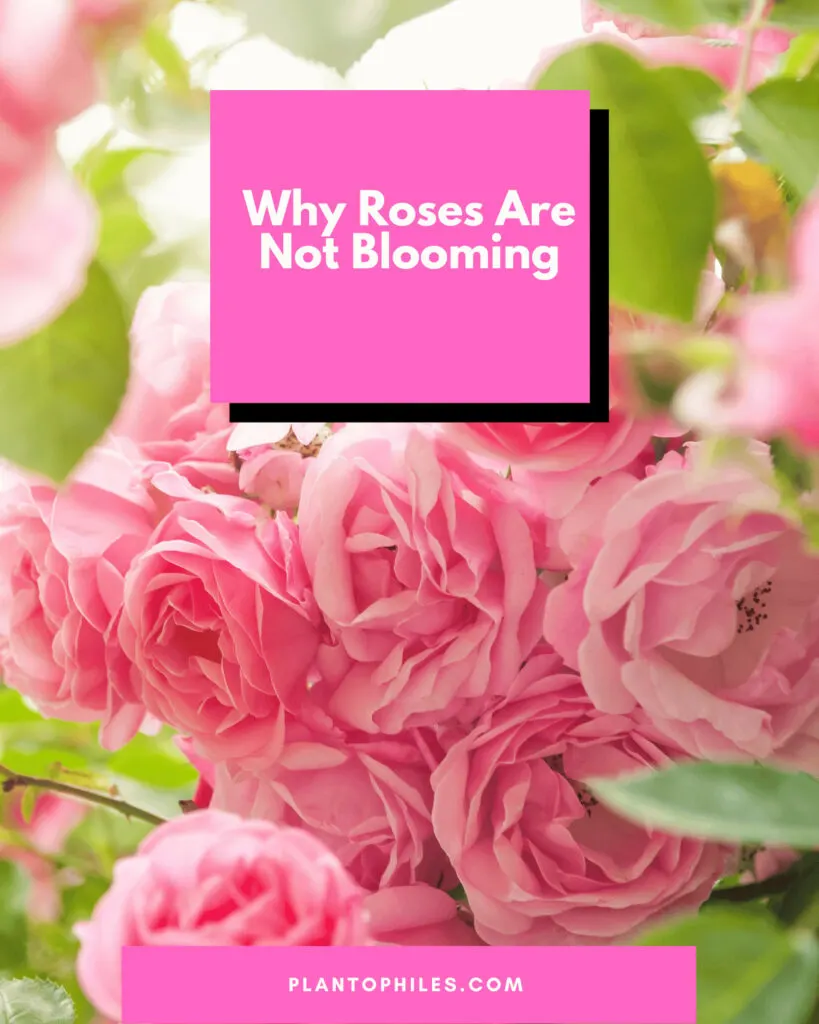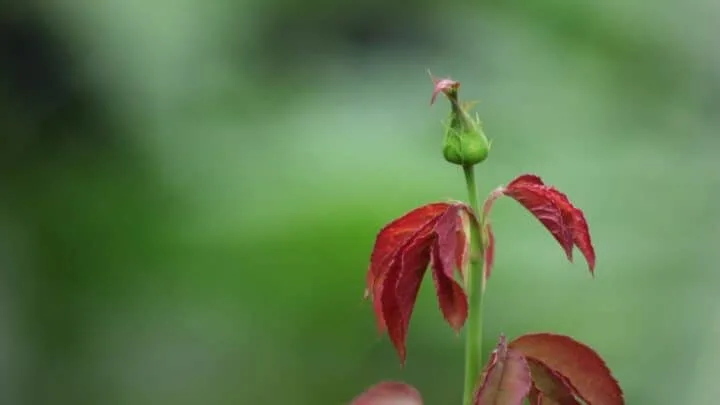When roses are not blooming, something is off.
If you overfertilize your rose bushes, they may not bloom. However, overfertilizing your plants is not the only reason your rose bush is not blooming.
There are wide varieties of roses. There are tiny hybrid roses that are smaller than half a dollar. In addition, there are colossal rose blooms that can measure over half a foot across.
Your rose bush is just another green plant without its flowers.
Depending on your variety of roses, it may not bloom but once a year.
Older types tend to bloom in the spring and fall, while newer roses can bloom intermittently throughout the growing season.
I have different types of roses in my garden, but I realized that the rose variety was not always the reason to blame for the missing inflorescences on my roses.
Let us examine the reasons why your roses are not blooming.
Table of Contents
Why are my roses not blooming?
Roses may not bloom if it isn’t their season yet. Overfertilization can also curtail blooming, just as applying too little will. Other reasons are the wrong soil, too little sunshine, not pruning your bushes, pests, or simply the variety.

Reasons why roses aren’t blooming
1. Inappropriate soil
Roses prefer well-draining, neutral soil with a pH of around 7, says the University of California. Generally, they are not very picky and are happy with various soils. It is essential that the soil is not too compact.
Dense, compact soils and soils with different layers, such as the general layer and topsoil, can cause problems when they obstruct the plant from growing and spreading its roots.
Large stones and other materials in the soil should be avoided. The best is to check the soil to ensure the pH level is neutral and ample nutrients are present.
Solution:
Getting your soil tested once a year is a good gardening practice. Your local agricultural extension office can do this for you.
The test will then tell you your soil’s components, particularly the nutrients and pH level. You can then add nutrients or, if necessary, reduce them.
2. Fertilizer abuse
Many people fertilize their roses just because they think they are supposed to.
However, overfertilization or fertilizing too seldom can lead to a rose bush that will not produce blooms. Conversely, under-fertilization can also lead to bushes that do not bloom.
On the other hand, poor rocky or sandy soil can be amended to sustain the growth of your rose bushes.
If you are planting new plants in poor soil, add organic matter so that the soil can retain water.
When nitrogen builds from applying too much fertilizer, it is time to test the soil.
Some fertilizers are formulated just for your rose bushes. Using such a product can help you keep your rose plants healthy, happy, and covered with blooms.
As heavy feeders, rose bushes have unique nutritional needs.
Most fertilizers use a mix of nitrogen, potassium, and phosphorus at 10-10-10 or 20-20-20. Not roses, though!
They thirst for potassium, but you do not need special fertilizer to add this mineral.
Solution:
Add the nutrients they need using aged, organic material around your plants.
You have options when it comes to fertilizing all of your plants.
Commercial fertilizer over organic products is a personal choice, according to the University of Florida; both work well to grow healthy rose bushes.
3. Inappropriate planting location
The location of your roses may be the problem. However, it doesn’t mean that if they bloomed in that particular location previously, they wouldn’t have any problems with their blooming later.
Look around you. Is that elm taller this year? Is your neighbor’s new garage blocking the sunlight your plant had last year?
Solution:
If that’s the case, plant your rose bush in another location.
Roses like sunshine, and if they are not getting enough, you will have more of a problem than a plant that is not blooming, as they will not be as healthy.
Plants that are not healthy are prone to disease and pest infestations.
4. Underwatering
Where you live, and the amount of local rain you receive determine how often you need to water your roses. Also, your soil type may hold water or drain quickly.
Roses prefer well-drained, nutrient-rich soil. Unfortunately, drainage is not always considered when setting plants in the ground, and roses underwatered can become stressed.
In addition, roses can be significantly affected when the temperatures exceed the 90 degree-Fahrenheit mark (32 degrees Celsius).
Excessive heat can dry the air and the ground more rapidly, depriving your rose bushes of necessary moisture. Moisture meters help you determine if you need to water your roses more or less.
Solution:
Water roses every 2-3 days outside.
Misting your roses will help them recover from the stress of heat, but do this in the morning to have time to dry before nightfall.
Plants that go to bed wet are susceptible to fungus.
5. Pests that love your roses
Aphids love the sweet smell of roses. But they will devastate your bushes if you do not catch them in time. These little green pests will eat the blooms before they form.
Plants getting too much nitrogen can become weak, making them easy targets for aphids.
These tiny insects live off the plant’s sap, and an ailing plant offers more accessible access to the sap due to weakened plant tissue.
Most gardens host a few aphids, but look out if they find a weak host! They will grow exponentially and eat every bloom your rose is trying to produce.
Solution:
A good countermeasure is ladybugs. They love aphids as much as aphids love your roses.
Check your plants frequently. You will find pest infestations early on this way. If you see a few insects, a blast from your water hose will remove them.
However, if there are more than a few, applying soap and water, neem oil, or spraying with an essential oil mix will rid you of larger populations.
If the infestation is really bad, use a systemic insecticide.
6. Improper pruning
If you are not pruning your roses at all after they bloomed or you are pruning them in the wrong places, they might not bloom.
Solution:
Pruning your rose bush at least once a year will stimulate its growth. Failure to do so can lead to long, leggy branches that produce fewer flowers yearly.
After it has bloomed, deadheading your rose bush is also a recommended practice to help it bloom more prolifically.
Prune roses above a bud eye in early spring or late winter. This way, new buds, and flowers can grow.
Frequently Asked Questions
When should my roses bloom?
That depends on the variety of roses you have. Newer types tend to bloom for the entire season while climbing, and older varieties may only bloom in the spring and fall. The time between blooming for newer varieties is 28 to 70 days.
Is my rose bush dead if they do not bloom?
It’s possible, but it can also be that your rose’s growth was stunted by a hard winter. Your rose bush may produce leaves come spring but not be strong enough to produce blooms.
The Last Rose Bloom
If roses are not blooming, for the following reasons:
- Roses may not bloom if it isn’t their season yet
- The wrong soil
- Incorrect watering
- Overfertilization can also curtail blooming
- Not enough sunshine
- No pruning
- Pests

Daniel has been a plant enthusiast for over 20 years. He owns hundreds of houseplants and prepares for the chili growing seasons yearly with great anticipation. His favorite plants are plant species in the Araceae family, such as Monstera, Philodendron, and Anthurium. He also loves gardening and is growing hot peppers, tomatoes, and many more vegetables.


